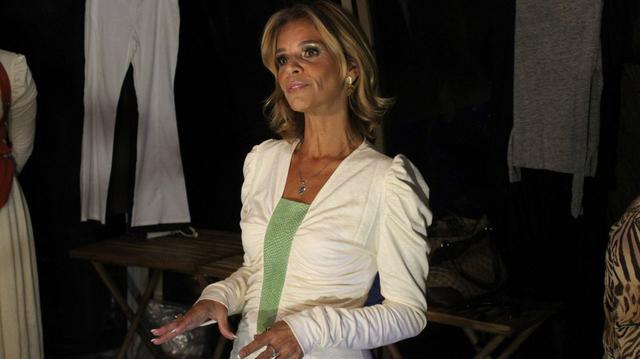Dress up with salmon skin or cod
From masks to salmon dresses
In Portugal, Thorres made its debut in the middle of the pandemic with the production of cloth masks thanks to an investor client. She later moved on to sportswear, swimwear and bikinis, until she decided to launch the fashion project with fish skins.
The process is not easy, although there is no lack of raw material. Cod from Norway, Denmark or Finland is desalted in Portugal -the second European country for fish consumption-, where tons of waste remain.
Thorres obtains the skins from the fishing sector and, after a selection, those that may be valid are sent to a tannery in the north of the country. Once tanned, they are ready to make clothes. «We are not killing the fish to make the clothes but working on the waste that exists. Our intention is to have a much less polluting disposal”, she affirms. “That was a path that we chose and the clients accepted and liked it very much. They understood that this had an added value”, explains the businesswoman, with 30 workers in Rio de Janeiro and eight in Portugal.
The main challenge today, she maintains, is to pull the skin more carefully "because it is not something you are used to and requires more care" and to do the chemical processes naturally.

Fine and odorless leather
The skin of salmon and cod is "super resistant", more delicate than leather and similar to that of goat, with a "tasty and fine" touch and stands out for its creativity. In addition, Thorres answers bluntly to a question that is constantly asked: «It doesn't smell».
The businesswoman debuted in "fashion with fish" in the Amazon, with salmon, tilapia and pirarucu skins. "When the skins started to be thrown away in the right way, they became a source of income for all the completely forgotten communities in the Amazon," she recalls. It is a blue economy model that allows the use of fish waste to be used to make bags, belts, shoes, wallets and clothing.
There are already several existing experiences in the world, such as the Nordic Fish Leader company in Iceland, the Coopescarte group in Brazil, the Parisian brand Thalie Paris or the Spanish Idunnbags.
Even the Food and Agriculture Organization of the United Nations (FAO) created the Blue Growth Initiative in 2017 to promote innovation in coastal communities through practices such as the use of fish remains to make clothing.
WhatsappMailFacebookTwitterComment ·
© Copyright LA VOZ DE GALICIA Sapolígono de Sabón, Arteixo, A CORUÑA (SPAIN) Registered in the Mercantile Registry of A Coruña in Volume 2438 of the Archive, General Section, on pages 91 and following, sheet C-2141. CIF: A-15000649.
Legal noticePrivacy policyCookies policyGeneral conditions









1612